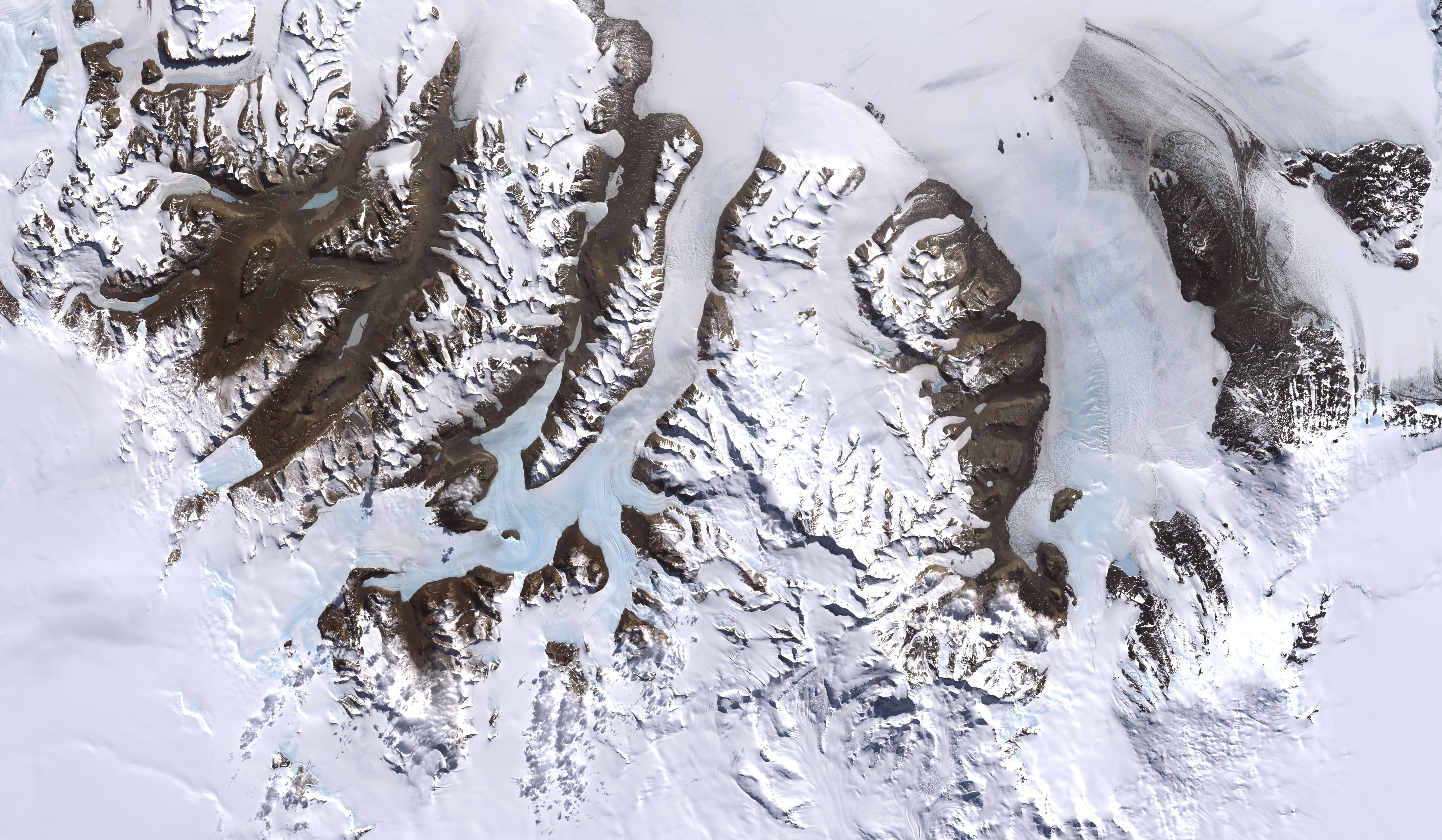 So far, we've been at our "home base" of McMurdo Station, which is on Ross Island. So, right now, we're technically not sitting on the continent of Antarctica. We're on an island very close to Antarctica in the ice shelf (which would be water, if it weren't covered with a glacier). Tomorrow we'll take a helicopter from McMurdo to the mainland of Antarctica to begin our field work. The particular area where we work is called the Dry Valleys. These valleys are in the Trans-Antarctic Mountains. This big chain of mountains runs from one end of Antarctica to the other. It is made up of smaller ranges, such as the Asgard Mountains and Royal Society Mountains. This is similar to how the Appalachian Mountains run from Georgia into Canada, but are made up of smaller ranges like the Green Mountains and White Mountains, or the Tetons in the Rocky Mountains. The smaller ranges of the Trans-Antarctic Mountains run next to each other, with valleys in between them. These valleys are the Dry Valleys. Here's what that looks like in a close-up map (upside-down from the one above):
So far, we've been at our "home base" of McMurdo Station, which is on Ross Island. So, right now, we're technically not sitting on the continent of Antarctica. We're on an island very close to Antarctica in the ice shelf (which would be water, if it weren't covered with a glacier). Tomorrow we'll take a helicopter from McMurdo to the mainland of Antarctica to begin our field work. The particular area where we work is called the Dry Valleys. These valleys are in the Trans-Antarctic Mountains. This big chain of mountains runs from one end of Antarctica to the other. It is made up of smaller ranges, such as the Asgard Mountains and Royal Society Mountains. This is similar to how the Appalachian Mountains run from Georgia into Canada, but are made up of smaller ranges like the Green Mountains and White Mountains, or the Tetons in the Rocky Mountains. The smaller ranges of the Trans-Antarctic Mountains run next to each other, with valleys in between them. These valleys are the Dry Valleys. Here's what that looks like in a close-up map (upside-down from the one above): And here's what that looks like from a satellite (rotated 90 degrees from map above):
And here's what that looks like from a satellite (rotated 90 degrees from map above): This picture shows where each of those ranges meets the sea. You see the mountains running alongside each other, with flat parts in between them. Those flat points are the valleys, some of which are covered with glaciers. The Dry Valleys are the valleys without glaciers, and they form the largest ice-free area on Antarctica. They receive very little snowfall, and never any rain. Instead of being covered with ice and snow, they are covered with loose rocks and soil. It's the soil that we're interested in! We do most of our work in Taylor Valley, which has 3 lakes (that are frozen, of course). Tomorrow, we'll be going to one of those lakes, called Lake Fryxell. Soon, I'll be able to show you actual photographs of our research group at Lake Fryxell in Taylor Valley!
This picture shows where each of those ranges meets the sea. You see the mountains running alongside each other, with flat parts in between them. Those flat points are the valleys, some of which are covered with glaciers. The Dry Valleys are the valleys without glaciers, and they form the largest ice-free area on Antarctica. They receive very little snowfall, and never any rain. Instead of being covered with ice and snow, they are covered with loose rocks and soil. It's the soil that we're interested in! We do most of our work in Taylor Valley, which has 3 lakes (that are frozen, of course). Tomorrow, we'll be going to one of those lakes, called Lake Fryxell. Soon, I'll be able to show you actual photographs of our research group at Lake Fryxell in Taylor Valley!The Dry Valleys are deserts, just like we have in the U.S. Most deserts are very hot, but the deserts on Antarctica are very cold! This is called a polar desert. So far the weather has been fairly nice, without being too cold. But, the weather is predicted to change before tomorrow, and will become cloudy with a chance of snow!




